These Coconut Chicken Tenders ooze kid appeal. Tender pieces of chicken are coated in a coconut crumb, giving the chicken a crisp texture with a subtle sweetness.

Chicken nuggets have become synonymous with "kid food." Take a glance at a kid's menu and typically they will feature, usually at the top. However, a lot of store-bought /restaurant chain nuggets have a long list of ingredients that we can't even pronounce and they aren't always the best choice for our kids.
Making your own is easy and a great way to get kids involved in the kitchen. These coconut tenders are a favourite in our house and I'm sure they will be with your family too. 🙂
Coconut Tenders Ingredients
- Chicken Tenders - Chicken tenders are the little strips of meat that are attached to the underside of each chicken breast. They taste the same as breast meat and are tender and moist when cooked properly. You can buy packs of chicken tenders easily in both the UK and Australia but I know, through reader feedback, that you can't always buy them this way in other countries. If you can't find them I recommend cutting chicken breasts into strips.
- Flour - I used plain (all-purpose) flour. If you are looking for a gluten-free option I have also trialled it, with success, using buckwheat flour and brown rice flour. I don't recommend coconut flour as I felt it made the chicken too dry.
- Egg - If you are looking for an egg-free alternative I tried milk, which worked well.
- Panko Breadcrumbs - I love the texture the panko breadcrumbs give but if you don't have panko breadcrumbs you can use any dried breadcrumbs. If you are looking to make these gluten-free you can just coat in the coconut. I don't, however, find it produces such a good result. To me, the chicken has a drier texture without the breadcrumbs.
- Desiccated Coconut - I use unsweetened desiccated coconut. If you can’t find desiccated coconut you can use coconut flakes. Simply pulse the flakes in a food processor /blender until they are fine.
Cooking Tips and Tricks
- Set Up Your Coating Station - It pays to be organised when coating. Have all the ingredients ready, and in separate plates, before you start. You will also want to have your baking tray /wire rack ready for the coated chicken to go straight onto.
- Only add a little of the coconut/panko mix to the plate at a time. If you add it all to the plate in one go often what happens is the coconut /panko mixture will clump together and then becomes difficult to get it to stick to the chicken.
- Coat the tenderloin in flour, make sure it is fully coated before moving onto the next step.
- After dipping in the egg, make sure be sure to shake off any excess egg, if you don't it will drip into your coconut mixture and cause it to clump together.
- Roll in the coconut mixture, rolling using two hands makes this easier and you can really push down into the coconut to get a good covering.
- Baking the chicken on a wire rack, set inside a baking tray produces the best results.
- If you want a darker, more golden, coloured coating, then pre-baking your coconut/panko mixture, before coating, for approx 10 mins to add depth of colour.
What to Serve with Coconut Tenders
Coconut tenders can be served with a range of sides and dips. I love to make a big platter plate and serve them with some sweet potato wedges, a range of chopped veggies, some grilled pineapple and a selection of dips. It is a fun and interactive lunch the whole family will enjoy.
Storage Instructions
These coconut tenders are best enjoyed fresh, straight out of the oven. However, they will keep, in the refrigerator, for a couple of days in an airtight container.
If you want to freeze, it is best to do it with chicken that is coated but uncooked. Freeze first, for a few hours, on a baking tray. Once frozen, transfer to a large ziplock bag / freezable container and store for up to three months.
You May Also Like
Have you tried this recipe? I love reading your feedback, please rate and leave a comment below or tag me on Instagram @healthylittlefoodies
Looking for more healthy kid recipes?Sign up for my free recipe newsletter to get new family friendly recipes in your inbox each week! Find me sharing more kid-friendly inspiration on Pinterest and Instagram.
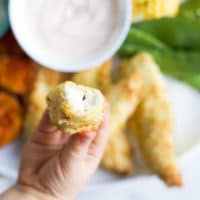
Coconut Chicken Tenders
Ingredients
- 500g 1.1lb Chicken Tenders SEE NOTE 1
- 30g (¼ cup) Pain (all-purpose) Flour SEE NOTE 2 for a tested gluten-free version
- 2 Eggs, beaten SEE NOTE 3 for a tested egg-free version
- 65g (¾ cup) Desiccated Coconut (unsweetened) SEE NOTE 4
- 40g (¾ cup) Panko breadcrumbs SEE NOTE 5
Instructions
- Preheat oven to 190c / 375f. Place a wire rack onto a lined baking tray. Spray or brush the rack with oil.
- Mix together the breadcrumbs and coconut. Pour a little of the mixture onto a plate. (SEE NOTE 6 & 7)
- Arrange your coating station: a plate of the flour, bowl of eggs second and plate of the coconut/ panko mixture. Have your wire rack next to you so you can place the coated chicken tenders on as you go.
- Coat the chicken tenders in the flour then dip in the egg (shaking off any excess egg) and finally roll in the coconut and breadcrumb mixture. Place straight on the wire rack.
- Bake in the oven for 18 minutes or until crispy and has reached an internal temperature of 75C (165F)
Recipe Notes
- You can use chicken breast instead of tenders. Simply cut the chicken breasts into strips, you will want to try to make sure to cut them to similar size and thickness for even cooking.
- Flour - I used plain (all-purpose) flour. If you are looking for a gluten-free option I have also trialled it, with success, using buckwheat flour and brown rice flour. I don't recommend coconut flour as I felt it made the chicken too dry.
- Egg - If you are looking for an egg-free alternative I tried milk, which worked well.
- Panko Breadcrumbs - I love the texture the panko breadcrumbs give but if you don't have panko breadcrumbs you can use any dried breadcrumbs. If you are looking to make these gluten-free you can just coat in the coconut. I don't, however, find it produces such a good result. To me, the chicken has a drier texture without the breadcrumbs.
- Desiccated Coconut - I use unsweetened desiccated coconut. If you can’t find desiccated coconut you can use coconut flakes. Simply pulse the flakes in a food processor /blender until they are fine.
- Only add a little of the coconut/panko mix to the plate at a time. If you add it all to the plate in one go often what happens is the coconut /panko mixture will clump together and then becomes difficult to get it to stick to the chicken.
- The amount of flour / coconut / panko needed will vary depending on the size of your chicken tenders. You may find yourself having to get more or find you have some left over.
Nutritional facts
*This post was first published in Jan 2014. It has been updated with new images and more detailed cooking instructions.

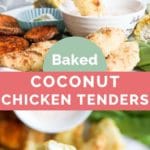
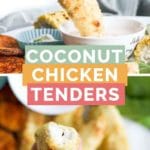

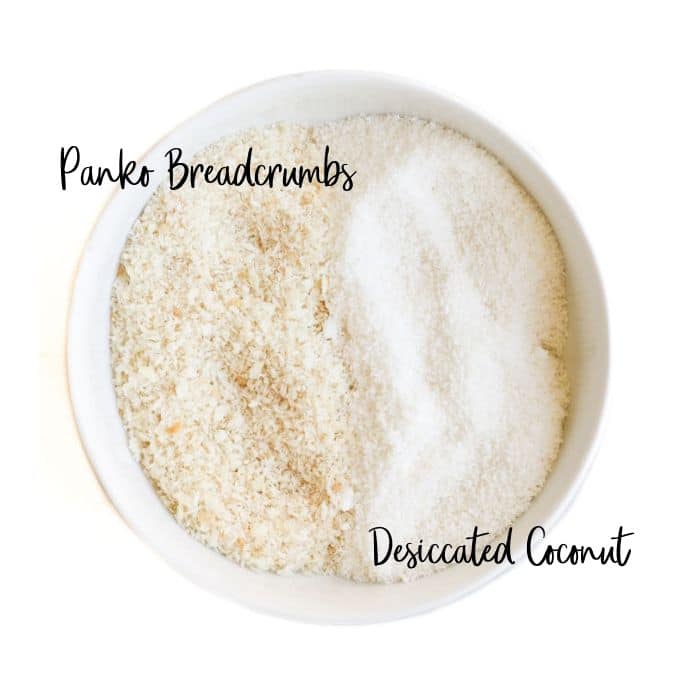
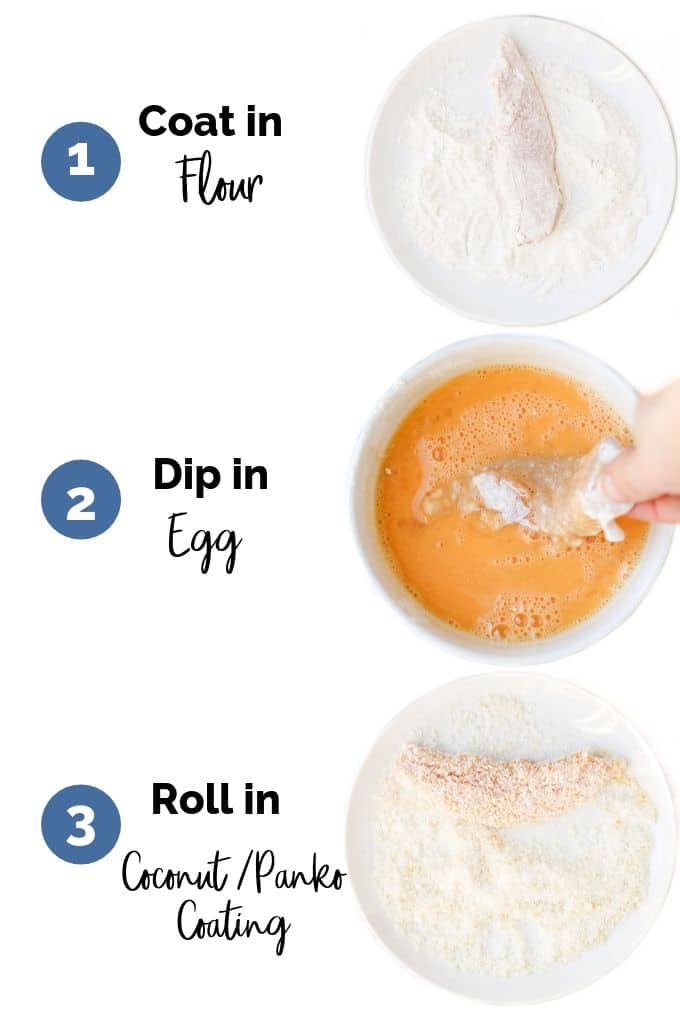
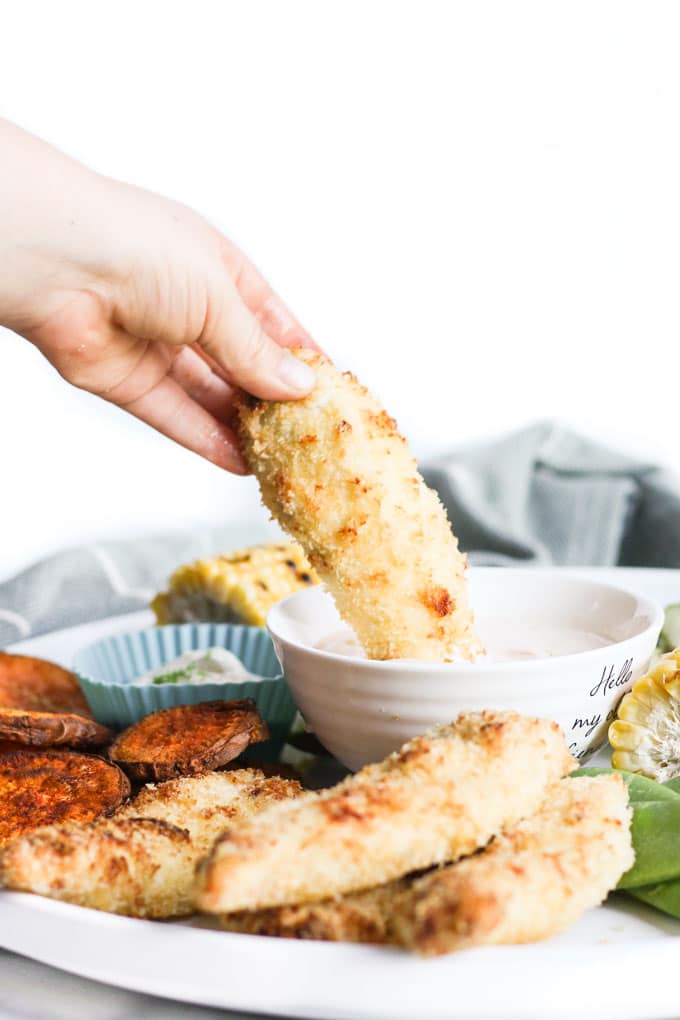
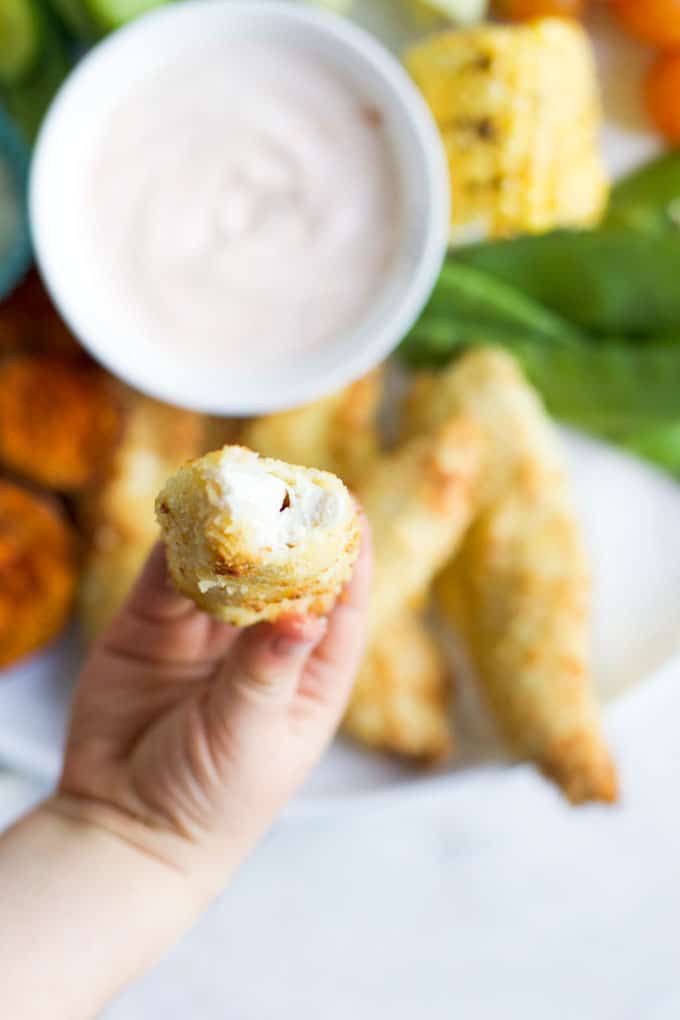
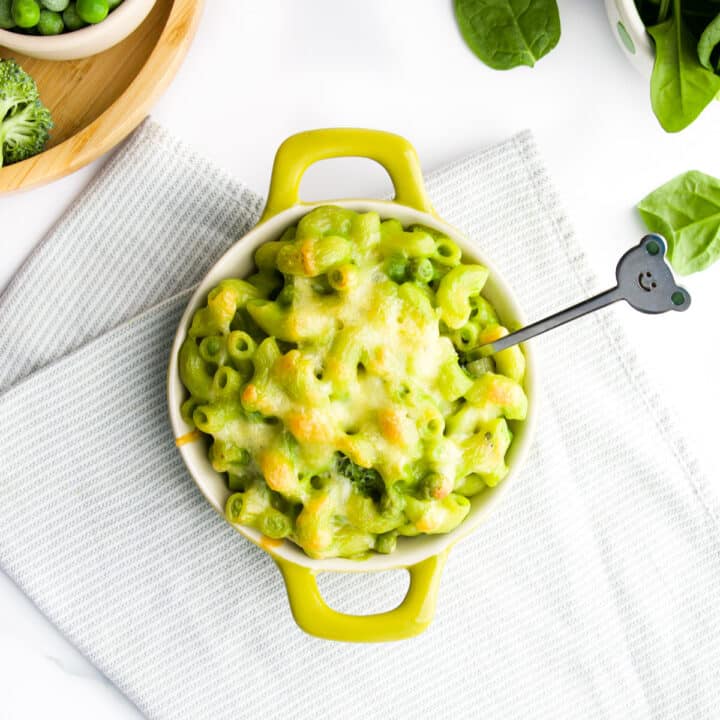
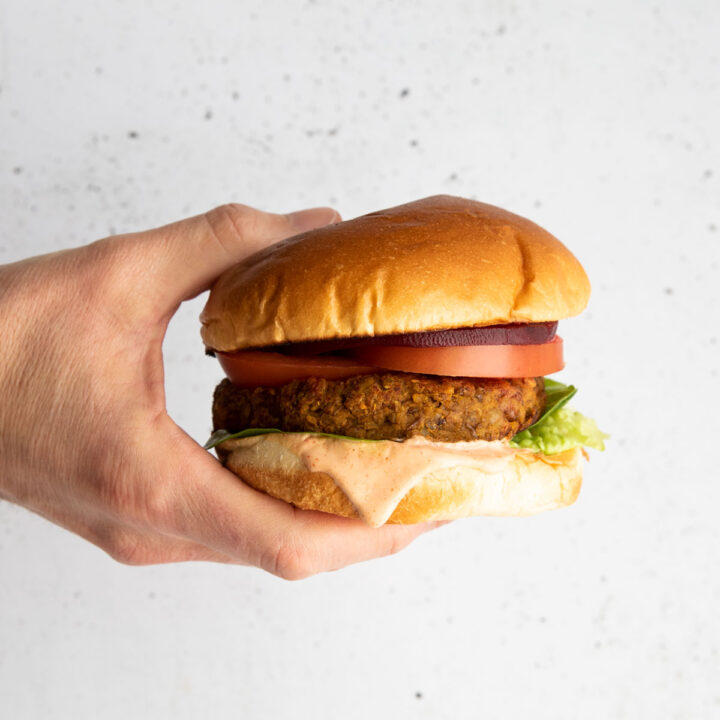
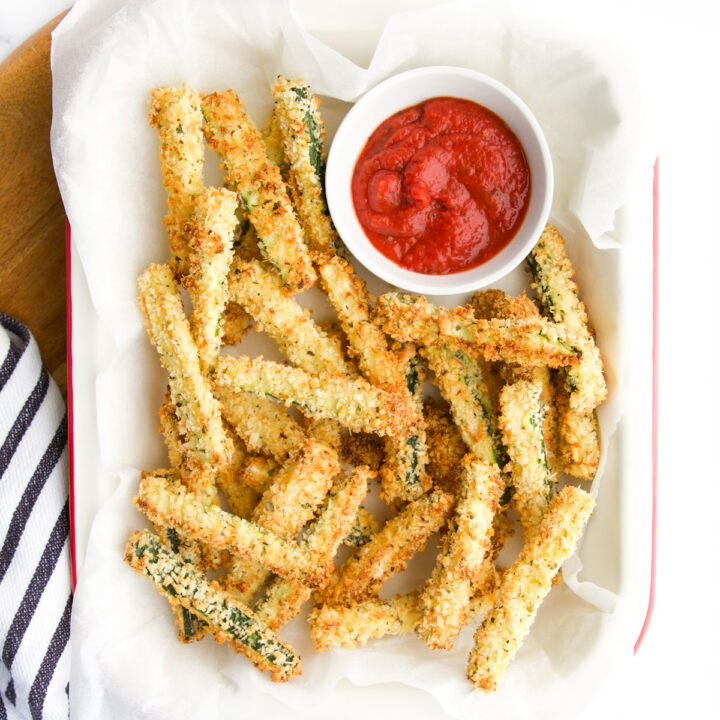
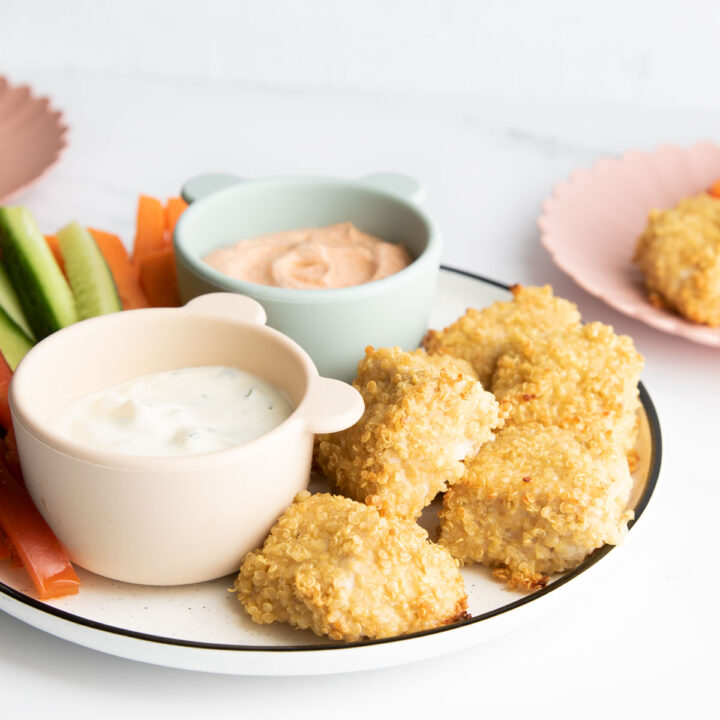
Julia
Hi Amy! What dip do you recommend going with these?
Amy
Hi Julia, I often make a smoked paprika dip (yoghurt, a little mayo, smoked paprika and salt (if kids are older)).
Michele
Do you add any salt?
Amy
If cooking for baby / young child I wouldn't add any salt. However, for older children/adults I would, you can season to taste 🙂
Amy lloyd
Hi i hae a 9 month old would this recipe be suitable for him? Thank you
Amy
Hi Amy, It really depends on your baby and how used to finger food he is. Has he progressed through the different textures of purees and is he used to finger foods? If offering, always remember to supervise 🙂